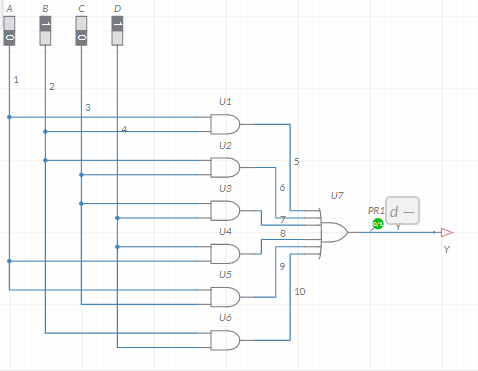The research content of digital circuits is completely different from that of analog circuits. In digital circuit systems, signals are already digitized, so research in digital circuits no longer focuses on signal amplification and attenuation. Instead, it focuses on studying the logical relationships of digital signals, such as filtering, decision-making, storage, and transmission. It is the vigorous development of digital circuits and very large-scale integration (VLSI) technology that has led to important disciplines such as computer technology, internet technology, and artificial intelligence.
1.The Digital Signals of Analyzed and Processed Signals by Digital Circuits
Digital circuits mainly process digital signals. Digital signals are signals that are discrete (non-continuous) in time and numerical value and have been encoded. In digital circuits, digital signals are represented by two states: low voltage and high voltage (i.e., logical values of 0 and 1, respectively). Digital circuits are designed to process these two logical values and the logical and timing relationships between sets composed of 0’s and 1’s.
2.The Way Digital Circuits Process Signals.
- Logic Relationship: In digital circuits, the main issue studied is the logical function of the circuit, that is, the relationship between the state of the input signals and the state of the output signals. The most basic logical relationships in digital circuits are “AND,” “OR,” and “NOT.” Following Figure shows the AND-OR relationship of a digital circuit. The operation of this relationship is called Boolean algebra, which will be introduced in detail in subsequent chapters.

- Timing relationship: In the design of digital circuits, not only the logical relationship between the input and output signals is studied, but sometimes the order in which events occur is also emphasized. Therefore, the processing of events in a clock-like manner has been introduced, resulting in concepts such as clocks and timing. Later developments include the concepts of state and state machine, making digital circuits almost omnipotent. Currently, the development of technologies such as computers, DSPs, machine learning, and the internet is inseparable from digital timing circuits.

JK flip-flop is a type of flip-flop with asynchronous set and clear functions, and its state is determined by the input signal and the previous state. In a synchronous counter, the input end of the JK flip-flop receives a clock signal, and the output end is connected to the input end of other JK flip-flops, forming a loop of the counter. When the clock signal is triggered, all JK flip-flops update their states simultaneously, thereby achieving the counting function of the counter.
3.The Accuracy of a Digital Circuit
Digital circuits do not require high amplitude of digital signals, as long as they can correctly recognize ‘0’ and ‘1’ during digital processing. This is completely different from how analog circuits handle signals. Of course, digital circuits also have their own unique accuracy requirements, which mainly involve the requirement for digit accuracy in numerical calculations. For example, an 8-bit data accuracy can only express about 1%, a 10-bit accuracy can reach one-thousandth, a 16-bit accuracy is close to one-hundred-thousandth, and a 32-bit accuracy can achieve accuracy within 10-9.